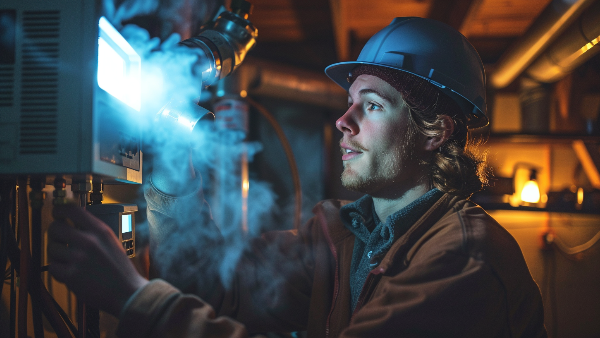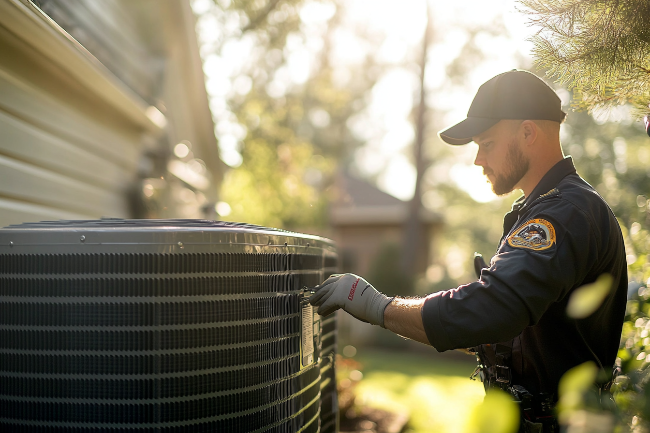Understanding the Differences Between Single-Stage, Two-Stage, and Variable Capacity Furnaces
Differences Between Furnace Types
A home furnace is a significant purchase, requiring the professional installation of an HVAC contractor. When you need a new furnace, how do you decide on the right unit for your property? As you look at the various models, you will inevitably come across terms like single-stage, two-stage, and variable capacity. What do these terms mean?
Shopping for a new furnace is not like buying new furniture. You must understand what you are looking for because there is no testing of different models in your home before furnace installation. Thankfully, understanding the primary difference is straightforward, and any licensed heating and cooling professional can help you decide on the best furnace for your home.
Importance of Talking To a Licensed HVAC Contractor
Many people like to get referrals from friends and family when looking into significant purchases. For services and some equipment purchases, asking for recommendations is a safe way to narrow down your choices. With furnaces, the situation is a little more complicated.
See, your friends or family members may have different capacity or usage needs, which means their advice about which model is best for you is not as valuable as you may want it to be. An HVAC professional is the only person who can or should give advice about furnace size or capabilities.
You should ask friends and relatives for referrals to an HVAC contractor they think you might like. Service references from personal relations usually help you quickly cut through the noise and find qualified technicians.
Primary Differences Between Furnace Models
Furnace models come in single-stage, two-stage, and variable capacity options. A single-stage furnace costs less than other options, but it runs at 100% capacity at all times. Still, many people like these furnaces because they rarely break and cost less to repair and maintain.
Two-stage furnaces can run at either 70% or 100% capacity. These options cost more than single-stage options but still maintain some of the benefits, including low maintenance costs.
Finally, variable capacity furnaces run at any capacity limit between 40% and 100%; they also cost more and are prone to breaking. They also cost more to maintain, but efficiency is high.
Furnace Heating Stages
An HVAC contractor can explain that the stages of a furnace essentially refer to how it uses gas to heat your home. A single-stage furnace means the only option for the gas valve is either all the way open or closed. Therefore, if your furnace can handle 100,000 BTUs per hour, it operates at this capacity whenever it is turned on.
Because a two-stage furnace can have a valve open at either 70% or 100%, you can save gas and money. You can set a 100,000 BTU furnace to use either 70,000 BTUs per hour or 100,000.
Finally, a variable capacity furnace modulates between 40% and 100%. For a 100,000 BTU unit, you can either operate it at 40,000 BTUs or anything up to 100,000.
Advantages of Two-Stage and Variable Capacity Over Single Stage
Any HVAC contractor will explain the primary benefits of two-stage and variable capacity furnaces are efficiency and comfort. Single-stage units can create temperature fluctuations of up to four degrees because they always blow at full speed, even when the air isn't entirely warm at the beginning and end of a cycle.
Also, because single-stage systems always operate at 100%, they are loud. Being able to operate a furnace at lower capacity ratings means you get quieter experiences.
Two-stage and variable capacity options also allow for improved air filtration. A system running at a lower capacity requires a longer cycle to warm the property. During the longer cycles, more air is moved through the filtration system.
Energy Efficiency and Furnace Stages
Every furnace has an efficiency rating. You may see a single-stage furnace with an 80% AFUE — annualized fuel utilization efficiency. The percentage refers to the amount of heat a homeowner receives for the amount of fuel burned. An HVAC contractor will explain that Single-use options are the least efficient, usually between 80% and 95%.
A two-stage furnace is a slight improvement to single-stage units because of their capacity options and longer heat cycles. Most two-stage units achieve an AFUE rating of 95% to 97%.
Finally, variable capacity units are the most efficient because they provide superior temperature and output control. A variable unit can achieve a rating of 98% AFUE.
Furnace Maintenance and Installation HVAC Contractor
Selecting a new furnace for your home is not a straightforward process. You need a professional assessment to determine the correct size and capacity for your property. If you are building a new home or looking to replace an older furnace, contact Next Level HVAC. The service will schedule an on-site assessment, and a licensed HVAC contractor will help you determine the best furnace for your needs. Next Level HVAC can also provide more information about the different types of furnaces.









